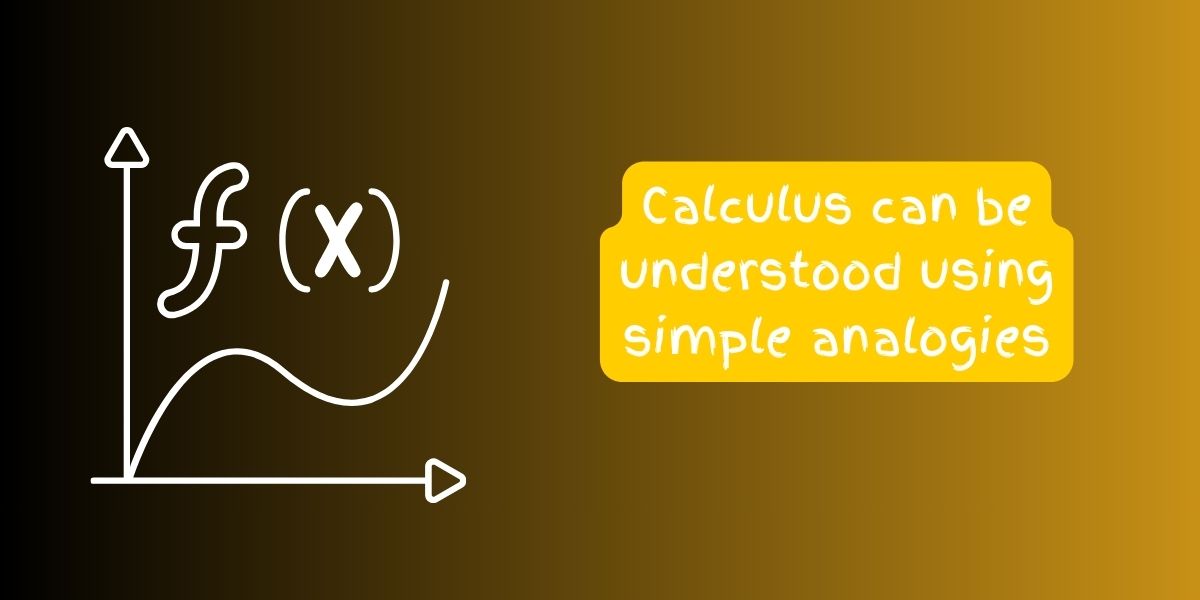Calculus can be understood using simple analogies that relate to everyday experiences. Here are some analogies to help explain calculus concepts:
- Derivatives – Speedometer on a Car:
- Imagine you’re driving a car, and the speedometer tells you how fast you’re going at any moment. The speedometer measures the rate of change of your distance traveled with respect to time. If you’re accelerating, the speedometer shows a higher speed, indicating a positive rate of change. If you’re slowing down, the speedometer shows a lower speed, indicating a negative rate of change. In calculus, derivatives tell us how fast something is changing at any given moment, just like the speedometer tells us how fast we’re driving.
- Integrals – Adding Up Small Pieces:
- Think about stacking up coins of different values to make a total amount of money. Each coin represents a small piece of something, and when you add them all up, you get the total value. In calculus, integrals work similarly. They add up infinitely many small pieces (represented by tiny intervals on a graph) to find the total area under a curve. It’s like adding up all the small changes to find the overall effect.
- Limits – Getting Closer and Closer:
- Imagine shooting arrows at a target and trying to hit the bullseye. At first, your shots might be far from the center, but as you practice, you get closer and closer to the bullseye. In calculus, limits represent this idea of getting closer and closer to a particular value or point. It’s like zooming in on a point on a graph and seeing where it’s headed.
- Rate of Change – Growing Plants:
- Consider a plant growing in a garden. Initially, it may grow slowly, but as time goes by, it starts to grow faster and faster. The rate at which the plant grows changes over time. Calculus helps us understand how the rate of change of something, such as the height of the plant, varies with respect to time. It’s like observing how fast the plant is growing at different stages of its growth.
- Optimization – Finding the Best Option:
- Picture yourself planning a picnic and trying to decide which route to take to avoid traffic and arrive at the park in the shortest time possible. Calculus helps us optimize decisions by finding maximum or minimum values. It’s like figuring out the best option among many possibilities, whether it’s maximizing profit, minimizing cost, or optimizing performance.
By using these simple analogies, calculus concepts become more intuitive and relatable, making it easier to grasp the fundamental ideas behind calculus and its applications in various fields.


No responses yet